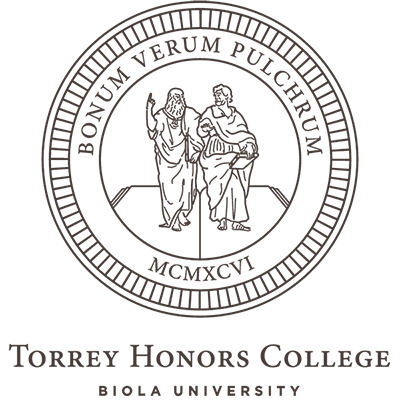A scene from the Leben der heiligen Altväter (1482)
Foreword to Harrower’s Trinitarian Self and SalvationAn Evangelical Engagement with Rahner’s Rule
Wipf & Stock, 2012
Modern Trinitarian theology has rejoiced in its discovery of the way God has made himself known in the economy of salvation. Operating under the broad guidance of Rahner’s Rule (“The economic Trinity is the immanent Trinity, and vice versa”), Christian theologians have traced the presence of Father, Son, and Spirit in the events of salvation history, and argued with new vigor and confidence that the relationships we see among the Trinitarian persons here below are revelations of eternal triune structures immanent to the very being of God. Much of the energy and excitement of modern trinitarianism, a thriving and prolific ecumenical undertaking, have come from this project of reading the character of the eternal Trinity directly from the events of the economy.
The recent rush to the economy has much to commend it. If the doctrine of the Trinity had become austere and remote from the gospel over the centuries, the modern reorientation served to correct that tendency by locating the contents of Trinitarian theology in the midst of the events of Biblical history. The prevailing winds of what one writer has called “neo-economic trinitarianism” also dispersed a farrago of speculative metaphysical accounts of the inner life of God, distracting constructs which cumbered the theological prospect. Trinitarianism has lately been developed in greater proximity to the gospel, largely thanks to a widespread, generalized “loose reading” of Rahner’s Rule.
Such a re-centering of trinitarianism onto the economy, with its renewed attention to salvation history and its eschewing of speculation, should have resulted in a wealth of new biblical insight. If a doctrinal hypothesis is true, after all, it ought to prove itself fruitful for Bible reading. It ought to throw a more helpful light on the Bible, highlighting neglected themes and giving new prominence to terms that had heretofore been obscure. But theologians operating under the banner of Rahner’s Rule did not, generally speaking, use the new emphasis to seek treasures new and old in the text of Scripture. And professional exegetes have not rushed gratefully to the side of systematicians with news of discoveries made possible by the conceptual tools of the new trinitarianism. Modern trinitarianism has often enough congratulated itself on being more biblical than previous generations (“I thank God that I am not like the men of the middle ages!”), but with few exceptions the slogan “more biblical” has signified a hermeneutical wave of the hand at the general sweep of biblical history, the broad outlines of the entire scope of the canonical narrative. Valuable as this perception of the big picture may be, what has been lacking is detailed reading, the kind of close exegesis that engages hard facts, peculiar details, thick descriptions, and unexpected phraseology; the kind of thing that could either confirm or problematize the whole paradigm established by Rahner’s Rule.
Curiously, that kind of close study has not been carried out by self-conscious devotees of Rahner’s Rule, but now is being undertaken by a school of interpreters who find themselves at odds with a “strict realist reading” of the rule. In other words, it is not Rahner’s Rule which has finally motivated more careful exegesis, but the backlash against it. That backlash has so far been primarily doctrinally articulated (see the works of Molnar, Badcock, Sanders, Rauser, Jowers, et al, cited below), but in the present work, Scott Harrower attempts a more directly exegetical critique of the strict realist reading of Rahner’s Rule. Harrower’s claim is that Rahner’s Rule (strictly applied) fails to do justice to the theology of Luke-Acts, which constitutes about a third of the New Testament. In the philosophy of science following Thomas Kuhn’s Structure of Scientific Revolutions, there has been a debate about how many observational exceptions are necessary to bring about a crisis in a dominant theoretical paradigm. If Harrower is right, the dominant paradigm of Rahner’s Rule fails to account for a full third of the biblical data. Surely that amounts to a crisis for the reigning theory. Surely the scramble for a new paradigm should begin.
Strict adherents of Rahner’s Rule assume that every relation we see among Father, Son, and Spirit in the history of salvation is an economic enactment of an eternal state of affairs. The relations of the three persons in time, that is, all have an eternal analogue immanent to God’s triune being. If the incarnate Son obeys and submits to the authority of the Father who sent him (to take the example that most exercises Harrower), it is because the eternal relationship he has toward the Father is a relationship of obedience and submission. The greatest contribution that Harrower makes to the current discussion is that he tests this kind of application of Rahner’s Rule by seeing if it can apply to Luke-Acts without reservation. Convinced that “if one is going to employ the [strict realist reading] of [Rahner’s Rule] to the narrative of Luke-Acts, then one must apply it to the whole narrative and not selectively,” he devotes several chapters to showing what would follow from interpreting all the economic-trinitarian activity of Luke-Acts as revelatory of immanent-Trinitarian states of affairs. The result is reductio ad absurdum: The lines of authority, for example, are criss-crossed multiple times, with the Son alternately carrying out the Father’s will at one moment, and then exercising dominion over the Father’s self-revelation the next (much hangs on Harrower’s interpretation of Luke 10:22). Similarly, Luke-Acts presents the Spirit conceiving and then impelling the Son in earlier moments, but bearing witness to and being dispensed by the Son at later moments. All of this makes perfect sense narratively and chronologically; in fact one of Harrower’s strengths here is his engagement of recent Luke-Acts scholarship with its emphasis on narrative unfolding (Kavin Rowe and Andy Johnson, among others). But what if the entire sequence of reversible subordinations were to be transposed into the eternal nature of God? They would be not so much mutual submission as mutually exclusive subordination.
Harrower’s overall message for Trinitarian theology today is that the transcendental deduction of immanent Trinitarian relations from the economy cannot be as direct as strict realists have suggested. What happens in the economy stays in the economy, and must be interpreted within the framework imposed by creation, salvation history, and the mediation of God’s self-revelation through the human nature of Christ. The book leverages its investigation of Luke-Acts to lodge a protest against a widespread, highly influential, but seldom critically examined, movement in modern Trinitarian methodology. While I do not agree with every line of Harrower’s argument, I commend this book as an excellent piece of research theology, the kind of solid work that captures the theological moment, advances the next few steps into new territory, and indicates where future progress lies. It has prompted me to look at my own earlier work and regret that, though I correctly indicated that the future of Trinitarian theology should be in the field of the theological interpretation of Scripture, I nevertheless failed to carry out any actual exegetical theology. Harrower has moved forward by undertaking a more elaborate and rigorous exegetical test of proffered theological norms. By what other standard should evangelical theology hope to make progress in understanding? It can be merely laudatory, and not very descriptive, to say that one project is “more biblical” than another, akin to saying it is more true or more correct. But Harrower’s book is more biblical in the sense that is a deliberate attempt to set Trinitarian theology more directly and immediately under the norm of Scripture.
Harrower’s book indicates two lines of research that ought to be developed by Trinitarian theologians in our time. First, the sustained attention he gives to Luke-Acts demonstrates the way a focused investigation in biblical theology can provide resources for systematic theology. In 1970, T. E. Pollard demonstrated that “it was St. John’s Gospel, with its Logos-concept in the Prologue and its emphasis on the Father-Son relationship, that raised in a most acute way the problems which led the church to formulate her doctrines of the trinity and of the person of Christ.” (Johannine Christology and the Early Church (London: Cambridge University Press, 1970), p. ix). The main lines of the history of the doctrine of the Trinity are indeed Johannine: logos, love, the Father-Son pairing, eternal life, life-in-himself, sending, begetting. A close reading of another canonical voice conjures the prospect of an alternative theological history, one in which the leading ideas of Luke-Acts (or more broadly of a synoptic theology) would have provided the terms and arguments for the elaboration of the doctrine. What if the leading voice had been a dogmatic theology of servanthood and messianic Lordship developed from Luke-Acts, with Johannine categories in a supporting and confirming role? The content of the doctrine would (in my opinion) have emerged recognizably the same; the same Nicene judgments would have been rendered, in different terminology. And at any rate the history of dogma is what it is. But latent within canonical Scripture are resources that are still awaiting fuller exploration and elaboration; angles from which the truth has not been described.
The second line of research suggested by the present book is in that field of historical theology, or the classic tradition just alluded to. Harrower is right to prioritize direct investigation of Scripture, and to narrow his field of vision to a single canonical author. But the next step would be to take this refreshed biblical theology up into conversation with the magisterial expositors of the great Christian tradition. That conversation would bring to the surface some crucial issues which remain submerged in the present work. The most momentous of these is the venerable question of the basis of the eternal sonship of Christ. It is a question which rumbles continuously in the background of the present work. And the whole issue is most tantalizingly raised when Harrower presses the question of what Rahner’s Rule might have to say about the ascension of Christ. If the economic sending of the Son from the Father has as its immanent analogue the eternal begetting of the Son from the Father (so the classic tradition of Trinitarian interpretation), then what is the immanent analogue of the economic return of the Son to the Father? It is Harrower’s angle of approach to the project of Trinitarian interpretation of Scripture that succeeds in putting a question like this in sharper profile than I can remember seeing it before. This is theological investigation on a grand scale, and it makes me eager to enlist the advice of superiors like Augustine, Cyril of Alexandria, and Thomas Aquinas, gathered around the text of Scripture and submitting to it as the norm.
 Fred Sanders
Fred Sanders

